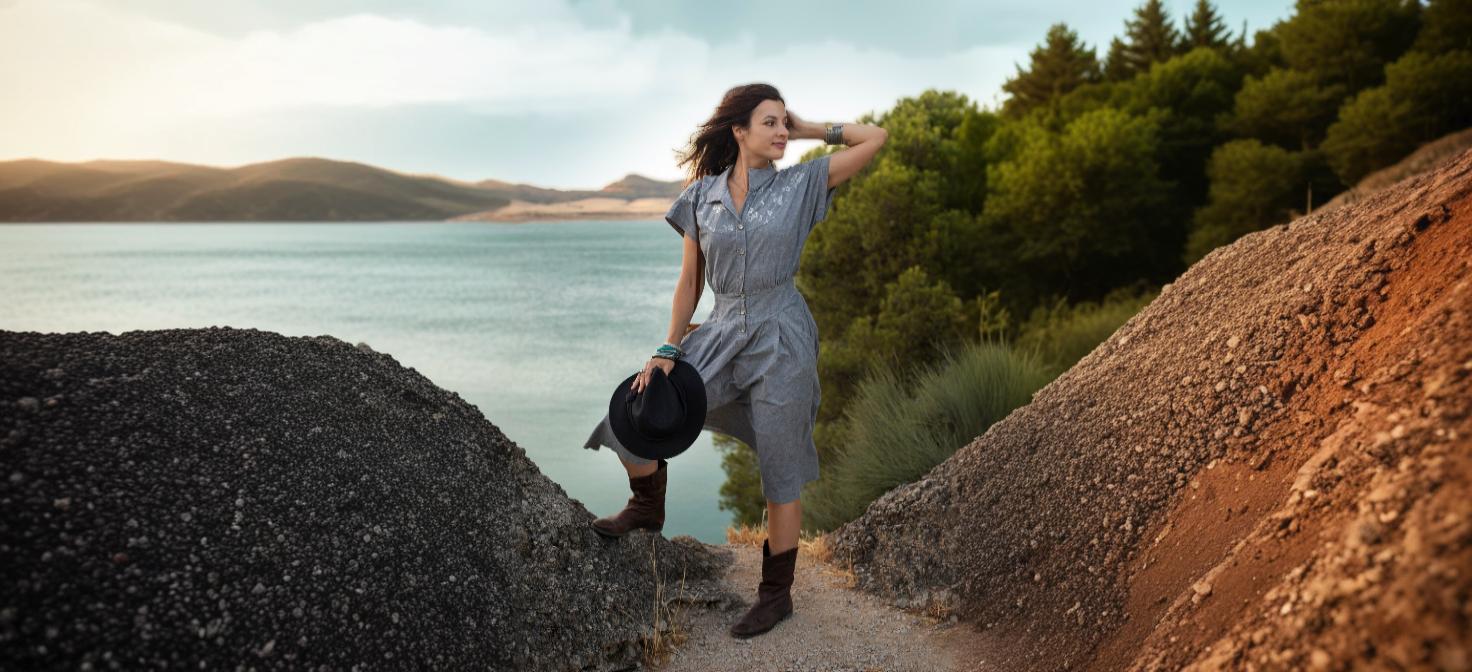
The allure of vintage fashion lies in its timeless elegance, its story-rich pieces, and the unique charm that comes with wearing a garment that has lived through decades. Vintage dresses, in particular, offer a window into the past, showcasing the craftsmanship, design, and style sensibilities of bygone eras. Mastering the art of the vintage dress is not merely about making a fashion statement; it’s about embracing history, celebrating individuality, and contributing to sustainable fashion practices. This guide aims to navigate the nuances of women’s vintage fashion, providing insights into selecting, styling, and preserving these exquisite pieces of wearable art.
The journey into vintage fashion begins with understanding what qualifies as ‘vintage’ and recognizing the value of authenticity. Generally, clothing that is 20 to 100 years old is considered vintage, offering a glimpse into the fashion trends of the 1920s through to the early 2000s. Each era presents its unique characteristics, from the roaring ’20s flapper dresses to the bold prints and silhouettes of the ’80s. Authenticating a vintage dress involves examining labels, construction techniques, and materials, which can also provide clues about the garment’s origins and its place within fashion history. Embracing vintage requires an appreciation for these details and a keen eye for distinguishing genuine pieces from retro-inspired imitations.
Finding the perfect vintage dress is akin to treasure hunting, requiring patience, persistence, and a bit of luck. Start by identifying your personal style and the eras that resonate most with you. Whether drawn to the elegant simplicity of the ’50s or the bohemian vibes of the ’70s, focusing on specific periods can streamline your search. Condition is paramount; look for well-preserved pieces free from significant damage, keeping in mind that minor flaws can add character or be repaired. Sizing in vintage fashion can differ significantly from modern standards, so always check measurements rather than relying on tagged sizes. Lastly, consider the versatility of the dress—think about how it can be styled for different occasions and whether it complements your existing wardrobe.
Accessories play a crucial role in elevating and completing any vintage-inspired outfit. Timeless jewelry pieces, such as pearl necklaces, brooches, or art deco earrings, can add a touch of elegance and sophistication to a vintage dress. When selecting jewelry, consider the era of your dress and choose pieces that complement its style and era. For instance, a simple strand of pearls can perfectly accentuate a 1950s cocktail dress, while a bold, geometric brooch may be more suited to a 1920s flapper dress. The key is to enhance the dress’s features without overwhelming it, allowing both the jewelry and the garment to shine.
The choice of footwear and handbags can significantly impact the overall look of a vintage outfit. For a cohesive look, opt for styles that reflect the era of the dress yet offer comfort and practicality for today’s wear. Classic pumps, T-strap shoes, or even retro-inspired flats can complement a variety of vintage dresses while ensuring that you remain comfortable. Similarly, selecting handbags that echo the design elements of your dress, such as material, color, or hardware, can tie your outfit together beautifully. Vintage or vintage-inspired clutches, box bags, or beaded purses are excellent choices that add authenticity and charm to your ensemble.
One approach is to fully embrace the era from which your vintage dress originates. This could mean pairing a 1940s dress with period-appropriate accessories, such as a hat, gloves, and vintage shoes. However, it’s important to balance this with a modern touch to avoid looking like you’re wearing a costume. Incorporating contemporary elements, like a modern hairstyle or minimalist jewelry, can help ground your look in the present.
Another strategy is to mix and match vintage and contemporary pieces. This can create a dynamic, eclectic look that’s both unique and wearable. Try pairing a vintage dress with modern accessories, like a sleek leather jacket or a pair of chunky sneakers. This not only highlights the beauty of the vintage piece but also makes it more adaptable to various occasions and settings.
Vintage dresses often come in unique sizes and shapes, which might not align with today’s standard sizing. Tailoring can make all the difference in how a vintage dress fits and flatters your body. Adjusting the length, taking in the waist, or altering the sleeves can transform a piece from frumpy to fabulous. A well-tailored vintage dress can look incredibly modern and sophisticated.
Caring for vintage dresses requires a bit more attention than contemporary clothing. Many of these garments are made from delicate fabrics that might not withstand harsh cleaning methods. Hand washing or dry cleaning is often recommended, depending on the material. Proper storage is also crucial to preserving the condition of vintage dresses. Use padded hangers or, for very delicate items, store them flat in acid-free boxes with tissue paper.
In conclusion, the journey into vintage fashion is one of exploration, appreciation, and creativity. By following this guide to mastering the art of the vintage dress, you’re well on your way to curating a distinctive and elegant wardrobe that pays homage to the rich tapestry of fashion history. Remember, each vintage dress tells a story, and by wearing it, you become a part of that story. So, step out with confidence and let your vintage dress be a testament to the enduring allure of women’s timeless fashion.
[Address-CA]: 14-30 Eglinton Ave W, Suite 580, Mississauga, Ontario, L5R 0C1
[Tel-CA]: +1 647-874-5950
Email: sales@tdmercado.com
Notifications